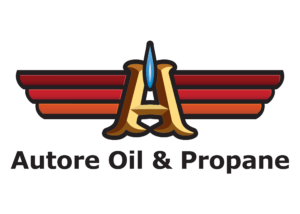Service interruptions can be more than an inconvenience. They can lead to unsafe conditions if not handled properly. For example:
Out of Propane = Mandatory Leak Test.
It may not be convenient, but it’s the law!
How do I read my propane gauge? Where is it located?
The gauge of your propane tank is located at the top of the tank, under the dome (lid). The gauge is round and has large numbers up to 100. Where the needle points is what percentage your tank is at. Please be advised, gauges are not 100% accurate.
Checkout the How To Read Your Tank Gauge video on our Safety Page!
At ___________% how many gallons do I have in my tank?
| Tank Size: | 120 gal. | 330 gal. | 500 gal. | 850 gal. | 1000 gal. |
| 80% | 96 | 264 | 400 | 680 | 800 |
| 70% | 84 | 231 | 350 | 595 | 700 |
| 60% | 72 | 198 | 300 | 510 | 600 |
| 50% | 60 | 165 | 250 | 425 | 500 |
| 40% | 48 | 132 | 200 | 340 | 400 |
| 30% | 36 | 99 | 150 | 255 | 300 |
| 20% | 24 | 66 | 100 | 170 | 200 |
| 15% | 18 | 49.5 | 75 | 127.5 | 150 |
| 10% | 12 | 33 | 50 | 85 | 100 |
| 5% | 6 | 16.5 | 25 | 42.5 | 50 |
Why does my propane tank need a gas check?
Gas checks are required by law anytime there is an interruption of service, meaning the flow of propane has stopped for any reason.
National Fuel Gas Code
8.2.2 Turning Gas On
During the process of turning gas on into a system of new gas piping, the entire system shall be inspected to determine that there are no open fitting or ends and that all valves at unused outlets are closed and plugged or capped.
Immediately after the gas is turned on into a new system or into a system that has been initially restored after an interruption of service, the piping system shall be checked for leakage. Where leakage is indicated, the gas supply shall be shut off until the necessary repairs have been made.
The factors of gas service interruption
Routine gas service interruption may occur when:
- Cylinders or containers undergo normal maintenance or when they are exchanged or repaired.
- Any changes are made to the gas distribution lines.
Out-of-gas service interruptions may be caused by:
- A gas leak
- Increased gas consumption
- Incorrect delivery frequency
- A will-call account’s failure to schedule a delivery or pay a bill
- Customer equipment failure
Out-of-gas service interruptions must be considered potentially hazardous because:
- Appliances may not have 100% safety shutoff controls
- A leak may have developed without the customer’s or gas supplier’s knowledge
- Defective appliances may be present or appliances may have been removed without properly capping of service lines
- Appliance pilot lights may not be lit.


